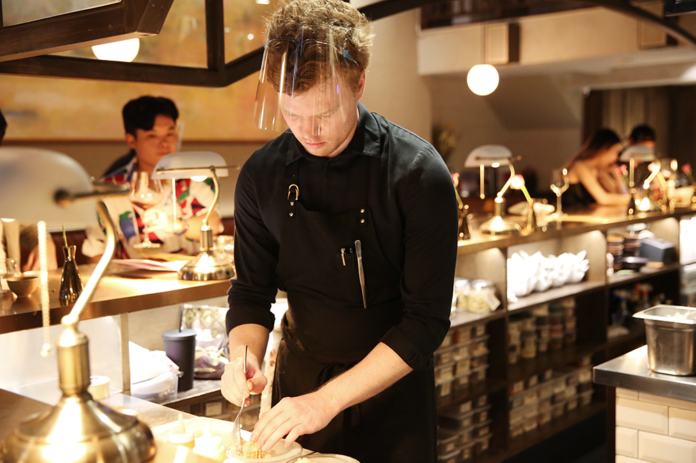
Photos by Tappanai Boonbandit
BANGKOK — A one-Michelin star fine dining restaurant may have found the secret to keeping loyal, loaded customers hooked – while supporting local rural farmers hard-hit by the virus.
Canvas, the one-star Michelin restaurant in Bangkok’s hip Thonglor area, reopened July 1 after closing for more than three months since March 18 due to the nationwide lockdown. With a bold menu using only locally sourced ingredients, Canvas has established itself as a culinary arthouse that churns obscure plants with no English names into internationally-valued tasting menus that wealthy Thais, expats, and formerly, tourists would die for.
“I feel lucky to support these farmers. I feel lucky to cook with their products,” Riley Sanders, the 32-year-old Texan head chef said. “Premium products like Thai wagyu and seafood suppliers don’t have much of a market right now.”
For the rich, or those who save up for a special dinner, most fine dining places across Bangkok have eased into the first month of reopening. What makes Canvas different from the generic overpriced rooftop hotel restaurant with a maître d’ is the use of only local ingredients – demand of which has dropped due to closed restaurants and virtually no international tourists.
“Fine dining has been more affected than street food, since there’s even more of a reliance on tourism,” Sanders said.
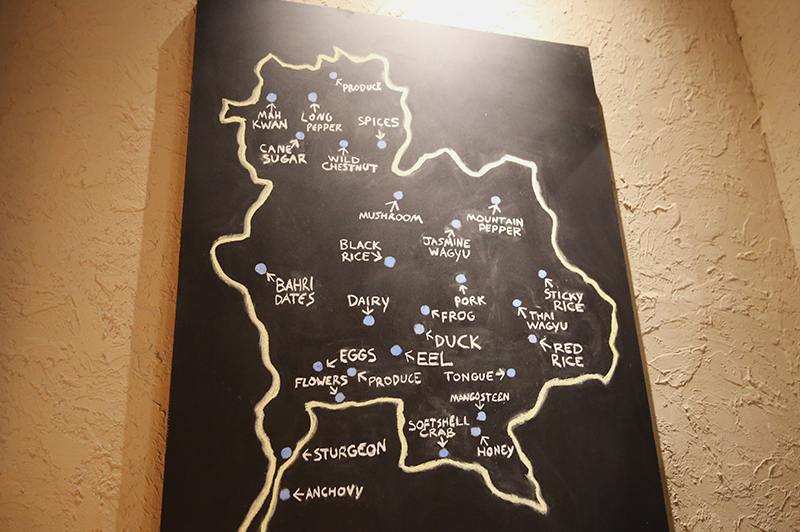
In one corner of the restaurant is a giant chalkboard map of where Canvas gets their ingredients – sturgeon from Hua Hin, red rice from Isaan. Sanders shows us a Line chat with a Southern farmer where he asks them to send him a shipment of a species of Garcinia, fruits which resemble small orange pumpkins.
“They know at this point I want the crazy stuff that no one really uses,” Sanders said. “I’ll go yes, please send me some.”
While Sanders seems unsmiling and stoic to the Thai eye, it’s only after talking to him that one realizes that the very young chef is as friendly as the next guy – but, in the nicest way possible, is an extremely-focused craftsman who is nerdily excited about local flora.
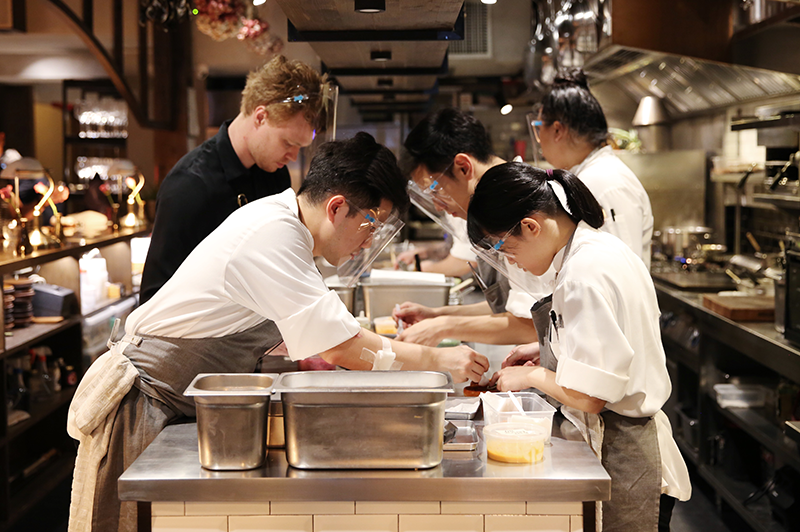
“It would be wonderful if people can value the ingredients here more. They’re special, important, absolutely the same quality as those found in France, Italy, Scandinavia, California, Japan and other places internationally recognized for their quality ingredients. It’s more about trying to change the perception.”
He spends an hour or two every day researching obscure plants, fruits, and meats to use and their seasonality, even during his restaurant closure. “I can never stop,” he said.
Get Used to Eating Flowers
While most other restaurants, especially fine dining ones, have scaled back their menu or prices, Sanders went in the opposite direction – expanding the course into a huge 18 dishes (counting separately the three starters and three desserts) and scaling the price to 5,265 baht.
With the Western and Chinese tourists gone, now the restaurant is relying on expats and Thais and seats only eight people per night, 16 on Fridays and Saturdays. Although they have had to lay off some staff, bustling in the open-floor kitchen are the six full-time chefs including Riley and two trainees. Two service staff are on hand.
“While others are toning back and reducing their menus and prices, we wanted to serve more food, more of an experience, give more than before, and have people leave super happy,” Sanders said.
As a Thai, the course as a whole was universally delicious and Riley’s creations and reinterpretations of Thai ingredients were a delight to discover. Most Thais will have never eaten so many edible local flowers in one sitting.
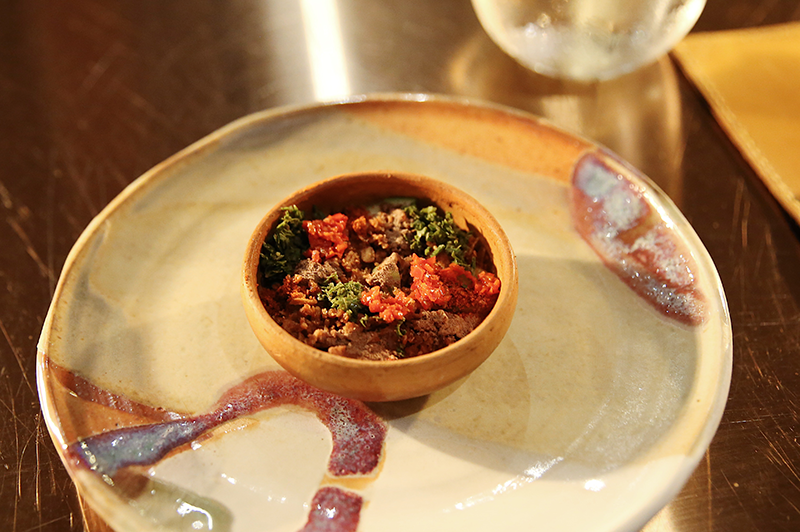
The starters include a shrimp paste ice cream topped with various sour fruits, as well as a cracker with squid and a bunch of clean-tasting, bright fuchsia bougainvillea, to get one used to eating flowers.
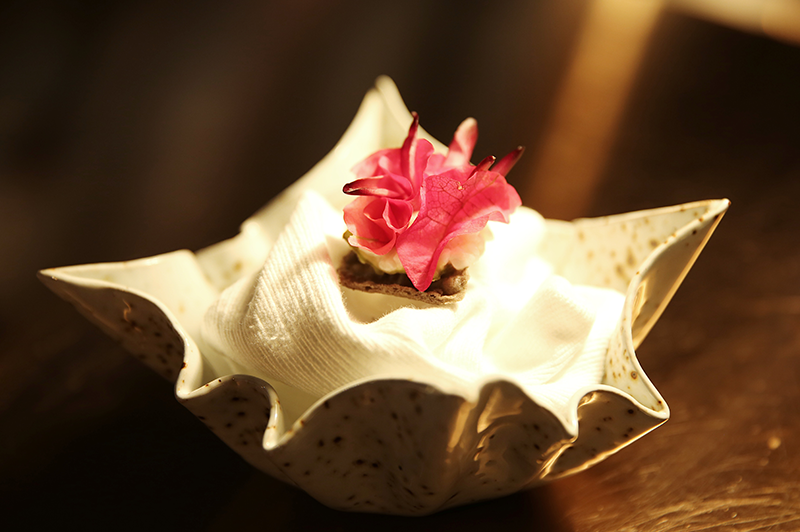
The starters eases one into the first doozy of a dish – every part of a Krabi river prawn is used to make clusters of savory ice resembling a garland. The prawn shell is made into shaved ice with tamarind, while the tomalley is made into a sauce, punctured by more shaved ice made from the bright red Dala flower.
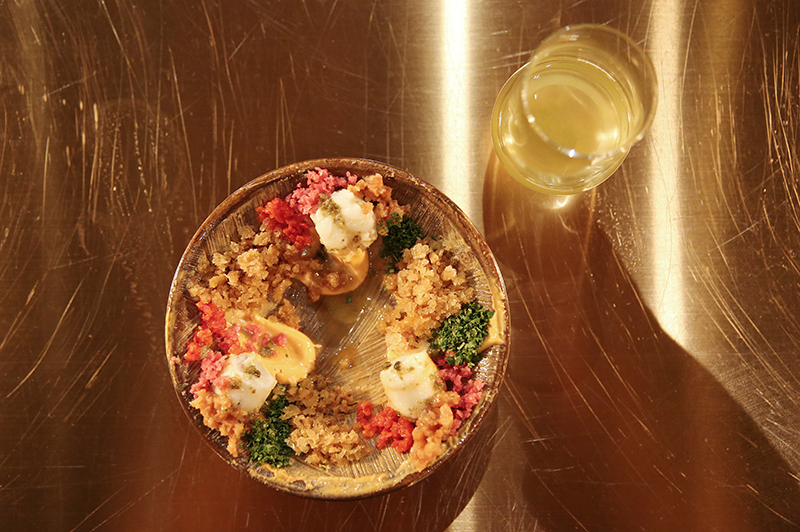
The Toasted Rice Bread gave us an existential crisis. How can bread, a decidedly Western staple, taste so delicious when made from Isaan red and sticky rice? How did the pillow of brown butter taste so tear-jerkingly beautiful when dusted with salted egg?
Why did Googling the name of the ueng-hen-saeng orchid (เอื้องเห็นแสง) garnishing it yield no results in English? Did this dish encapsulate Canvas’ mantra, of Thai ingredients, transformed into a culinary art beyond the cardinal directions?
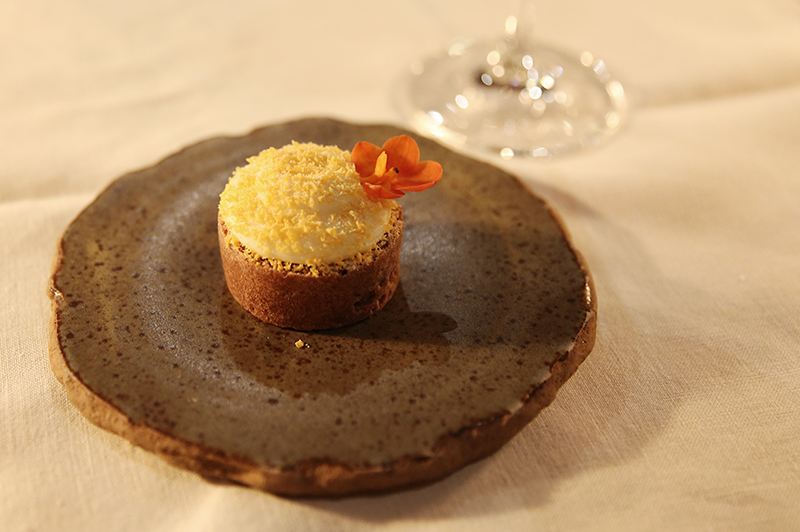
Finding that ingredients often sold at OTOP sales but made in a fine dining setting were also a fun game of hide-and-seek. Sea grapes are served with wild betel oil and bilimbi (taling pling) to spice up sturgeon. Khao leum phua black sticky rice from Phetchaburi is served with caviar in a pool of coconut-tamarind milk.
Blood clams and stink beans, usually sold by the kilo in markets with much fewer shoppers than before, are put onto a rice cracker with the bean made into a sauce.
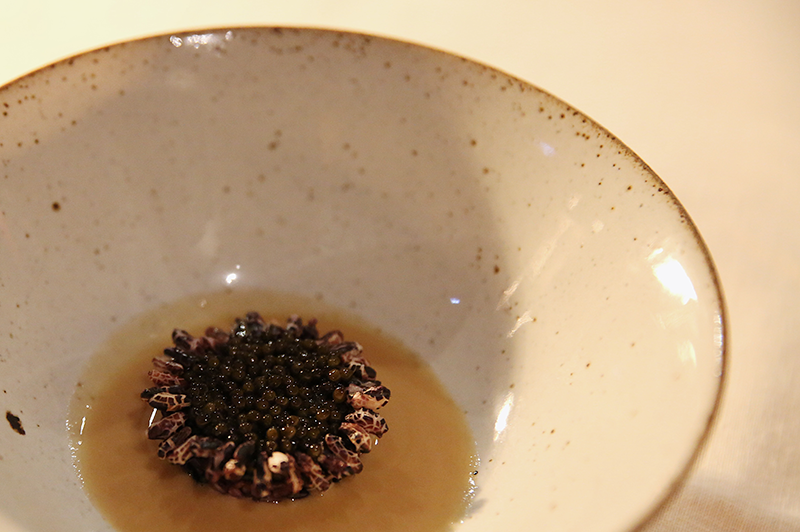
Local producers even make cameo appearances. A Tomme cheese produced in Chiang Rai is made into a mini-burger with jicama, culantro, and dried pork.
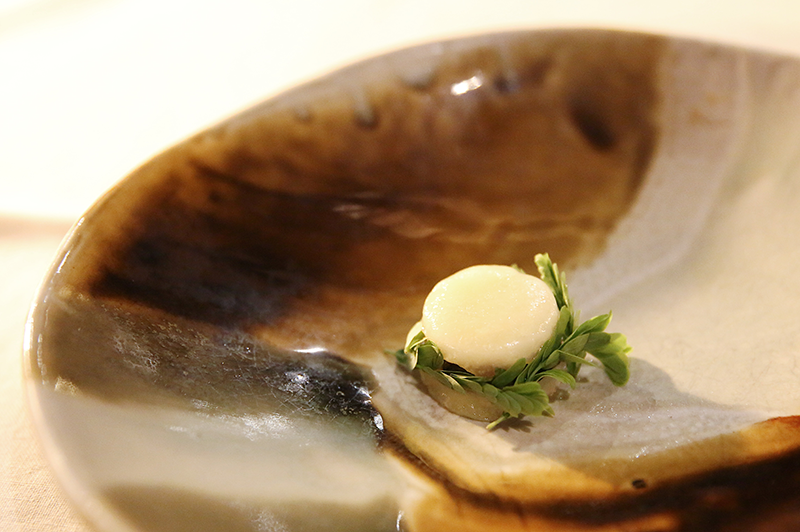
The sheer effort into prepping ingredients is also impressive – they ferment a pineapple with peppers and sauces for two months until it becomes black, then slow-grill it for 24 hours before topping it on a duck breast that was brined for a week. Staff even bring out a tray of the blackened pineapple for you to see before serving the duck breast.
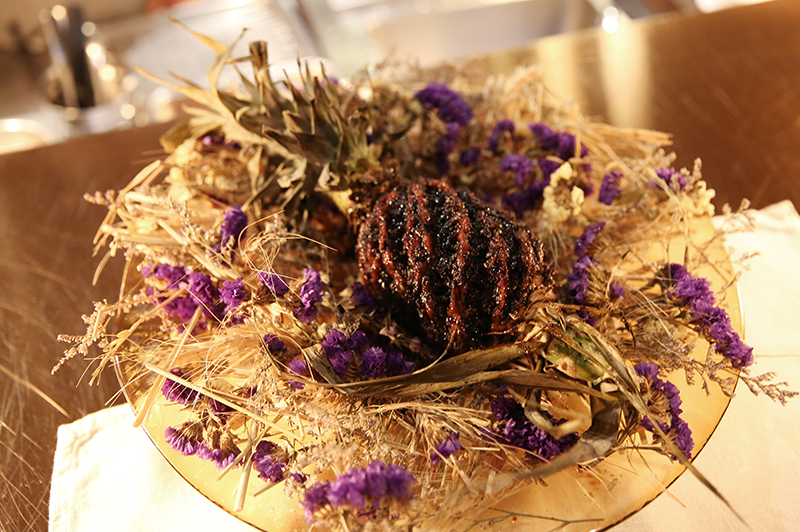
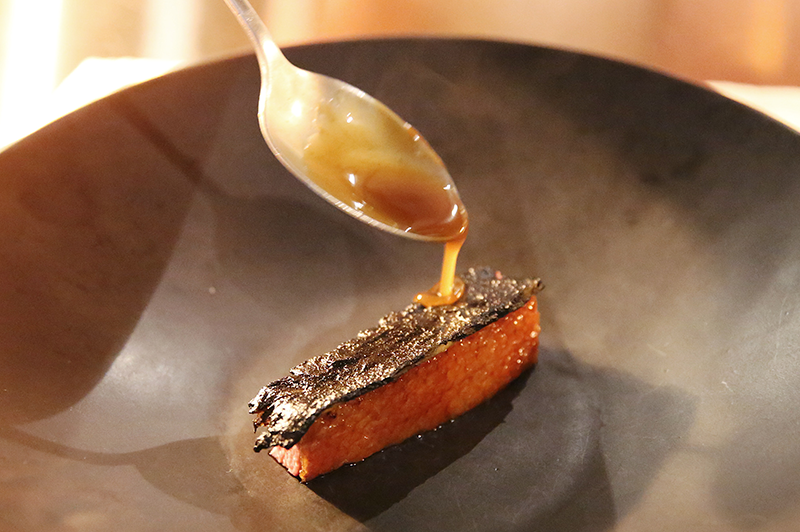
The last main is a beef tongue served with black garlic smeared all over the plate. In Thailand’s north and Isaan, black garlic is produced to increase value for garlic sellers. Canvas makes their own black garlic, which is fermented for two months, twice as long as the commercially sold kind.
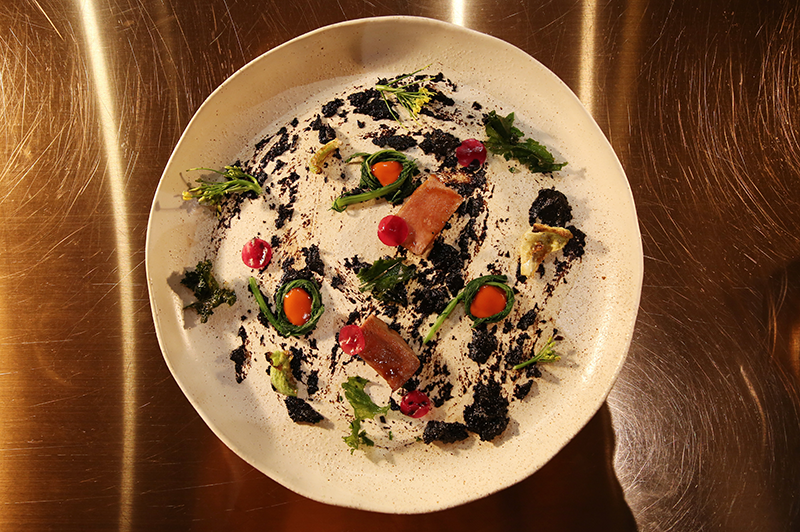
Desserts include a sorbet made of snake fruit (salak) and the osmanthus flower, a purple yam ice cream drizzled and powdered with mangosteen, and a marshmallow made from yadong liquor.
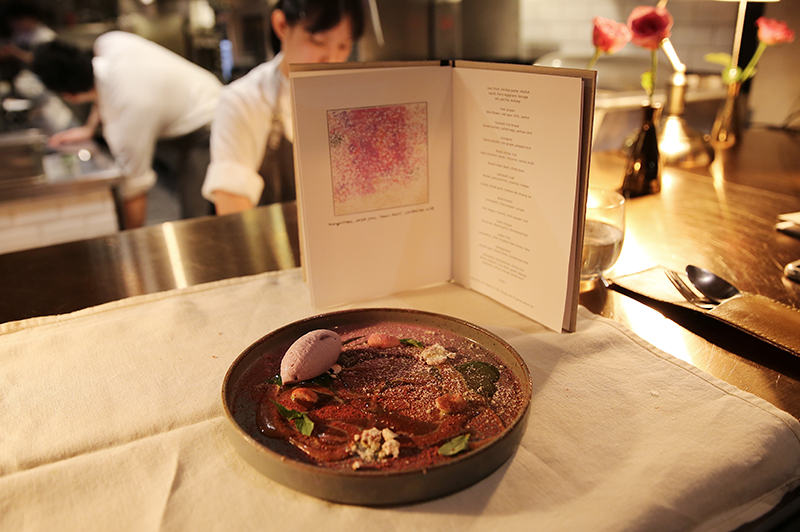
The tea pairing (an extra 1,404 baht) mostly consists of teas from the Thai brand Monsoon, while the wine pairing (3,393 baht) although steep, includes 10 glasses of thoughtfully-paired wines and sake.
The Tsantili Retsina Greca Terra, for example, is a white with a strong aroma of pine, and the Lino Maga Oltrepo Pavese Montebuono is traditionally believe to be the wine Napoleon drank to celebrate his victory at the Battle of Marengo in 1800.
Canvas is open everyday except Monday. Dinner starts at 7pm except for Fridays and Saturdays, when two rounds of diners are served at 6pm and 8:30pm. Reservations required. Canvas is located on Thonglor Road, a short walk from BTS Thong Lor.
This review is unsponsored and based on a hosted visit to the restaurant.














































